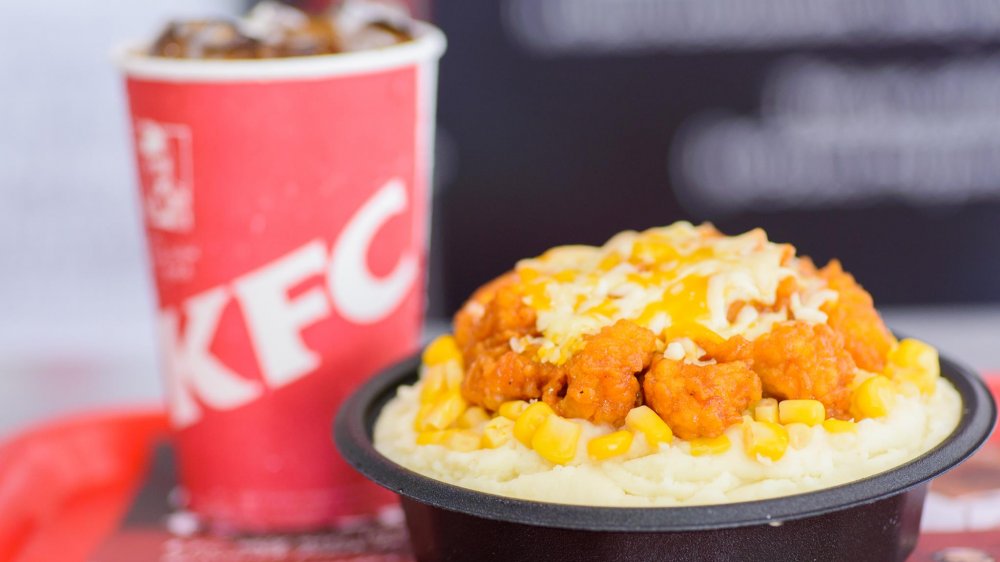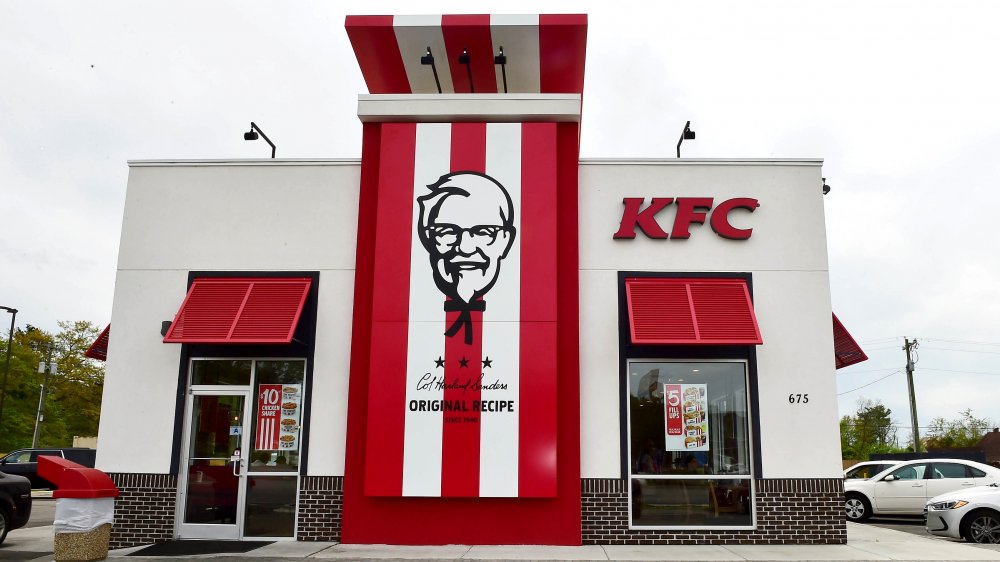The Real Reason You Should Never Order KFC's Famous Bowl
KFC's Famous Bowl probably haunts Colonel Sanders' ghost. Before he died in 1980, he regularly railed against the changes KFC made to his recipes, all but disowning his brainchild. For instance, in 1976, The New York Times, reported that on the eve of his 86th birthday, Sanders performed a surprise inspection at one KFC and bashed the mashed potatoes as "wallpaper paste" that became "sludge" when combined with gravy. "There's no way anyone can get me to swallow those potatoes," he declared. He also decried "the worst fried chicken I've ever seen." A sassy Sanders once complained, "My god that gravy is horrible," according to the Associated Press, and ripped a new crispy chicken recipe as "nothing in the world but a damn fried dough ball stuck on some chicken."
Notably, mashed potatoes, gravy, and chicken join corn and cheese to form the main ingredients of a Famous Bowl, which the colonel might have likened to a toilet bowl had he seen its inception in 2006. Perhaps his misery would have loved the company of comedian Patton Oswalt, who eviscerated the Famous Bowl in a famous bit on stage. Oswalt essentially called the meal an insult to human dignity and dubbed it a "failure pile in a sadness bowl" (via Eater). Colonel Sanders' disappointed ghost and Patton Oswalt's soul-withering disappointment might be strong enough reasons for some to shun the Famous Bowl. But there's an even bigger issue.
KFC's Famous Bowl comes with more than chicken and mashed potatoes
NPR reports that weeks before KFC added the Famous Bowl to its menu, the Center for Science in the Public Interest sued the company for the unhealthy way it made its food. CSPI's president issued a blistering rebuke accusing KFC of "making its unsuspecting consumers' arteries extra crispy." The bowl only seemed to confirm those concerns, becoming KFC's highest-calorie item at the time.
The KFC website says a Famous Bowl clocks in at 710 calories. It packs 31 grams of fat, 82 grams of carbohydrates, and 2,450 milligrams of sodium into a big pile of commercial success. If those numbers make your blood pressure rise, it might be all that salt. The American Heart Association places an adult's "ideal" upper limit of daily sodium intake at 1,500 milligrams. According to the Cleveland Clinic, total fat intake should fall between 44 and 77 grams for an adult with 2,000-calorie daily diet. To paraphrase Patton Oswalt, that sounds like a pile of heart failure, which would be sad.

